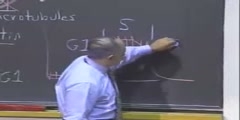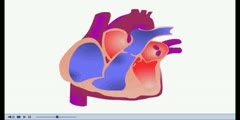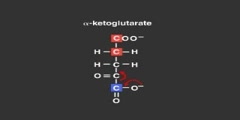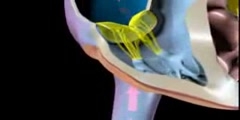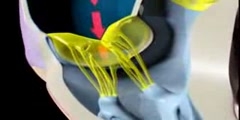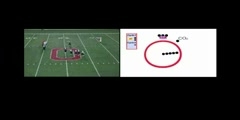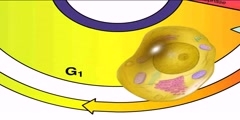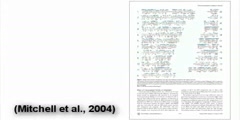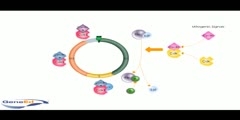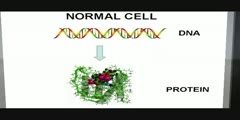Lec Last - The Leverage Cycle and Crashes
"Lec Last - The Leverage Cycle and Crashes" Financial Theory (ECON 251) In order to understand the precise predictions of the Leverage Cycle theory, in this last class we explicitly solve two mathematical examples of leverage cycles. We show how supply and demand determine leverage as well as the interest rate, and how impatience and volatility play crucial roles in setting the interest rate and the leverage. Mathematically, the model helps us identify the three key elements of a crisis. First, scary bad news increases uncertainty. Second, leverage collapses. Lastly, the most optimistic people get crushed, so the new marginal buyers are far less sanguine about the economy. The result is that the drop in asset prices is amplified far beyond what any market participant would expect from the news alone. If we want to mitigate the fallout from a crisis, the place to begin is in controlling those three elements. If we want to prevent leverage cycle crashes, we must monitor leverage and regulate it, the same way we monitor and adjust interest rates. 00:00 - Chapter 1. Introduction 02:15 - Chapter 2. Understanding Leverage 13:45 - Chapter 3. Supply and Demand Effects on Interest Rates and Leverage 21:52 - Chapter 4. Impatience and Volatility on Setting Leverage 34:48 - Chapter 5. Bad News, Pessimism, Price Drops, and Leverage Cycle Crashes 48:01 - Chapter 6. Can Leverage Be Monitored? Complete course materials are available at the Open Yale Courses website: http://open.yale.edu/courses This course was recorded in Fall 2009.
Here is the next lecture for this course
Lec 25 - The Leverage Cycle and the Subpr ...
01:16:30 | 3730 viewsCell Cycle/Signaling Lecture
48:31 | 15872 viewsNurseReview.Org - Animation on Cardiac Cycle
00:21 | 22486 viewsTricarboxylic Acid Cycle
07:57 | 31781 viewsCitric Acid Cycle or Krebs Cycle
00:00 | 13794 viewsCardiac Cycle
01:52 | 23967 viewsVirus Lysogenic Cycle
01:26 | 32519 viewsCardiac Cycle in Our Body
01:52 | 23462 viewsOSU presents the Krebs Cycle
01:36 | 9482 viewsLife cycle of virus (lytic)
01:15 | 47911 viewsEnergy cycle in nature Part 1
14:55 | 8301 viewsCell Cycle
03:01 | 25642 viewsEndogenous Retroviruses_ Life-Cycle and A ...
09:44 | 7481 viewsProteins that Regulate the Cell Cycle
02:43 | 10045 viewsCancer, cell cycle and checkpoints (1/2)
10:07 | 11402 viewsNo content is added to this lecture.
This video is a part of a lecture series from of Yale
Lecture list for this course
Lec 2- Utilities, Endowments, and Equilibrium
Lec 4- Efficiency, Assets, and Time
Lec 5- Present Value Prices and the Real Rate of Interest
Lec 6 - Irving Fisher's Impatience Theory of Interest
Lec 7 - Shakespeare's Merchant of Venice and Collateral, Present Value and the Vocabulary of Finance
Lec 8 - How a Long-Lived Institution Figures an Annual Budget. Yield
Lec 10 - Dynamic Present Value
Lec 12 - Overlapping Generations Models of the Economy
Lec 13 - Demography and Asset Pricing: Will the Stock Market Decline when the Baby Boomers Retire?
Lec 14 - Quantifying Uncertainty and Risk
Lec 15 - Uncertainty and the Rational Expectations Hypothesis
Lec 16 - Backward Induction and Optimal Stopping Times
Lec 17 - Callable Bonds and the Mortgage Prepayment Option
Lec 18 - Modeling Mortgage Prepayments and Valuing Mortgages
Lec 19 - History of the Mortgage Market: A Personal Narrative
Lec 21 - Dynamic Hedging and Average Life
Lec 22 - Risk Aversion and the Capital Asset Pricing Theorem
Lec 23 - The Mutual Fund Theorem and Covariance Pricing Theorems
Lec 24 - Risk, Return, and Social Security
Lec 25 - The Leverage Cycle and the Subprime Mortgage Crisis

